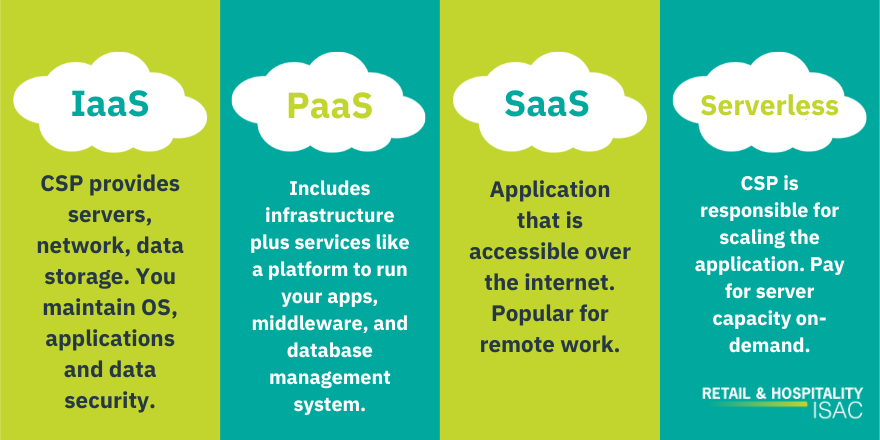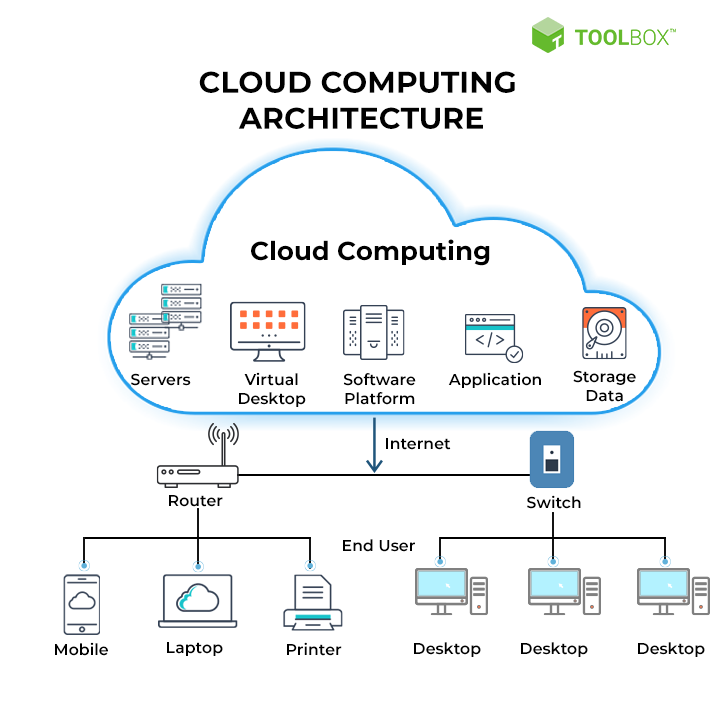Optimize ROI With Strategic Cloud Provider
In the fast-evolving landscape of organization modern technology, the strategic usage of cloud services has become a critical consideration for organizations aiming to enhance their return on investment. By aligning cloud services with specific business objectives and using a thorough strategy to source monitoring, business can unlock a wide range of advantages that extend past plain expense savings. The elaborate interplay between price optimization, scalability remedies, and rigorous protection steps in the realm of cloud computer holds the vital to not just growing yet making it through in today's competitive market.
Benefits of Cloud Providers for ROI
Leveraging cloud services can substantially enhance return on financial investment by enhancing functional efficiency and lowering framework expenses. One key advantage of cloud services is the scalability they offer.
Furthermore, cloud services give boosted flexibility and dexterity. With the ability to accessibility data and applications from anywhere with an internet link, workers can function a lot more efficiently and collaborate flawlessly. This flexibility likewise enables businesses to promptly adjust to changing market problems, providing a competitive edge.
Moreover, cloud services boost safety and security measures, helping to shield delicate information and mitigate dangers. Cloud providers typically have durable safety and security procedures and routinely update their systems to prevent cyber hazards. By leveraging these services, companies can minimize the chance of costly information breaches and downtime, eventually causing a greater roi.
Price Optimization Approaches
How can businesses properly minimize expenses while taking full advantage of the benefits of cloud solutions? One efficient approach is to continually keep an eye on and adjust cloud resource allocation based on real usage.
An additional expense optimization strategy includes optimizing information storage by archiving or removing repetitive information. Applying data lifecycle monitoring plans helps in taking care of data successfully, decreasing storage space expenses, and improving total system performance. Moreover, using serverless technologies can assist in further expense reduction by billing only for real usage instead of provisioning and keeping specialized servers.

Scalability and Versatility Solutions
For businesses looking for to enhance their functional effectiveness and responsiveness to transforming demands, implementing scalable and adaptable cloud remedies is vital. Scalability and flexibility in cloud services permit organizations to readjust their resources according to rising and fall workloads, ensuring ideal efficiency without unnecessary prices. By leveraging cloud scalability, companies can flawlessly enhance or lower their computing power, storage, and data transfer as needed, enabling them to fulfill peak needs without overprovisioning resources throughout slower durations.
Additionally, versatility in cloud solutions enables companies to adjust promptly to market changes and technological developments. With the ability to quickly incorporate brand-new devices and services right into their existing cloud framework, companies can remain active and affordable in today's hectic company atmosphere. Whether it's releasing brand-new applications, expanding into brand-new markets, or suiting remote workforces, flexible cloud services offer the dexterity and versatility needed for continual development and success.

Safety Measures for Data Defense
Executing durable security procedures is important for securing sensitive data and making certain data protection in cloud atmospheres. When making use of cloud services, organizations have to prioritize safety and security to minimize risks related to information violations and unapproved access. File encryption plays a crucial role in safeguarding data both en route and at remainder. By securing data, companies can make sure that also if information is obstructed, it continues to be unreadable without the proper Website decryption secret.
Multi-factor authentication (MFA) is one more important safety action that includes an added layer of defense by calling for customers to supply numerous kinds of confirmation before accessing sensitive info. This assists avoid unauthorized gain access to, also if login qualifications are jeopardized.
Normal security audits and monitoring are vital components of maintaining information protection in the cloud. By conducting routine analyses and keeping track of for any type of suspicious tasks, companies can without delay recognize and attend to prospective safety dangers prior to they rise.
In addition, executing role-based gain access to control (RBAC) makes sure that only authorized employees can access certain information collections, lowering the danger of data leaks or unapproved alterations (linkdaddy cloud services press release). By incorporating these protection determines into their cloud approach, companies can enhance information protection and decrease safety and security vulnerabilities
Making The Most Of Functional Efficiency
To maximize operational effectiveness in cloud environments, critical resource allowance is paramount for improving procedures and enhancing home general productivity. By leveraging cloud solutions efficiently, companies can scale resources up or down based upon demand, maximizing and minimizing operational expenses performance. Automating regular tasks, such as software application updates or information back-ups, via cloud management tools can free up IT groups to concentrate on even more critical initiatives. Executing tracking and analytics devices within the cloud framework enables real-time visibility into performance metrics, allowing aggressive recognition and resolution of possible concerns prior to they influence procedures. Additionally, adopting a cloud-native method to application advancement and implementation can additionally enhance operational efficiency by raising dexterity and lowering time to market for brand-new solutions. Collaborating very closely with cloud company to align sources with business objectives and consistently evaluating and optimizing cloud use can ensure that operational efficiency remains a top concern for continual success in the cloud atmosphere.
Conclusion
Finally, leveraging strategic cloud services can considerably boost operational effectiveness and lower facilities prices, eventually maximizing roi for companies. By implementing cost-saving methods, maximizing information storage space, and ensuring information protection with protection steps, organizations can achieve scalability, versatility, and boosted performance in the cloud environment. Optimizing ROI with cloud solutions calls for continuous monitoring, optimization, and automation to adapt to altering work and make certain sustained growth and success.
Additionally, cloud solutions boost security steps, assisting to secure delicate information and minimize threats (Cloud Services).Executing robust safety procedures is necessary for guarding delicate information and making certain information defense in cloud settings. When utilizing cloud solutions, companies must prioritize safety and security to reduce dangers connected with data breaches and unauthorized accessibility. Teaming up very closely with cloud solution suppliers to line up resources with company browse around here objectives and routinely evaluating and optimizing cloud use can guarantee that operational performance continues to be a top priority for continual success in the cloud atmosphere
By carrying out cost-saving techniques, optimizing information storage, and ensuring information security through protection procedures, companies can achieve scalability, adaptability, and improved efficiency in the cloud atmosphere.